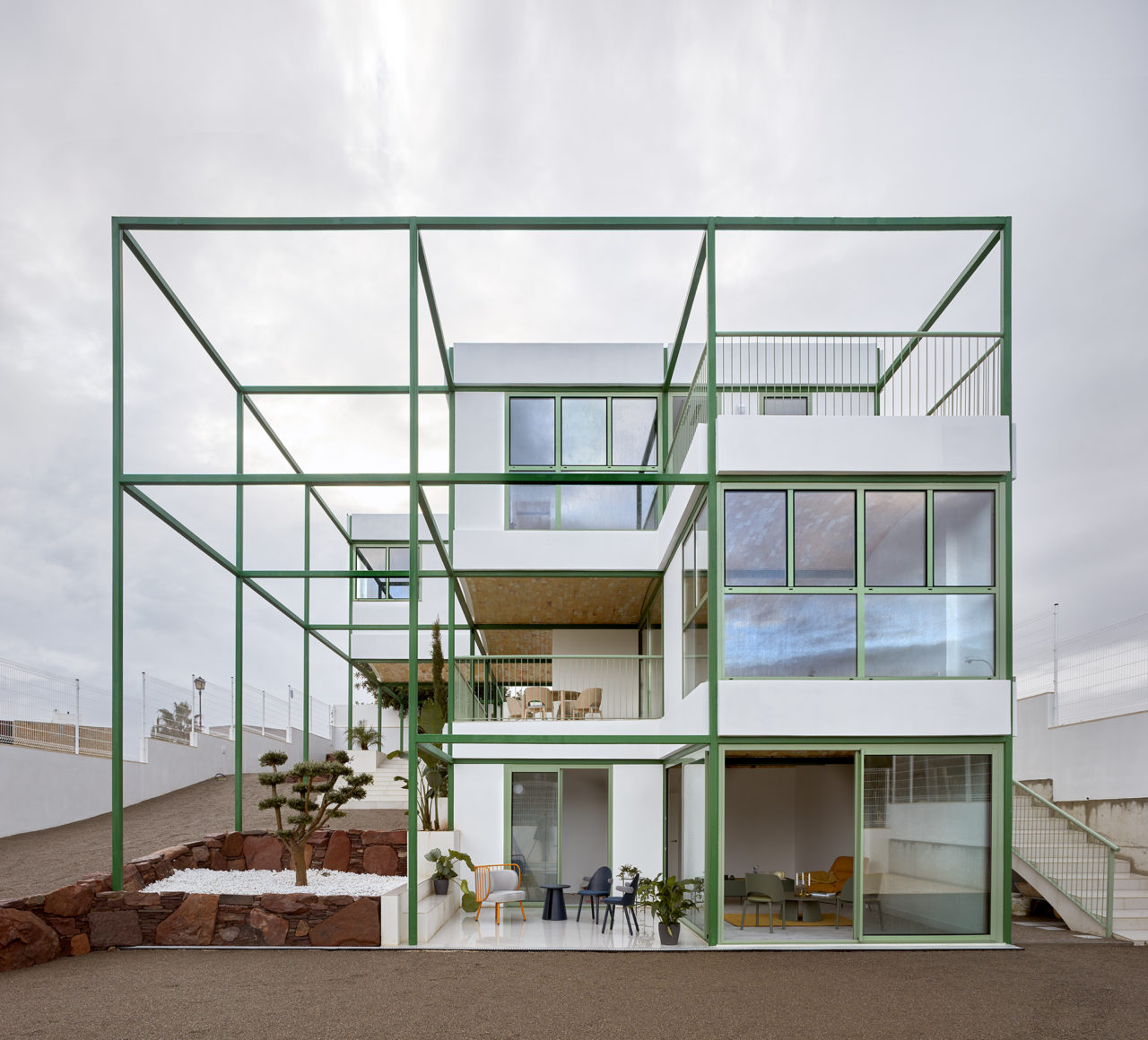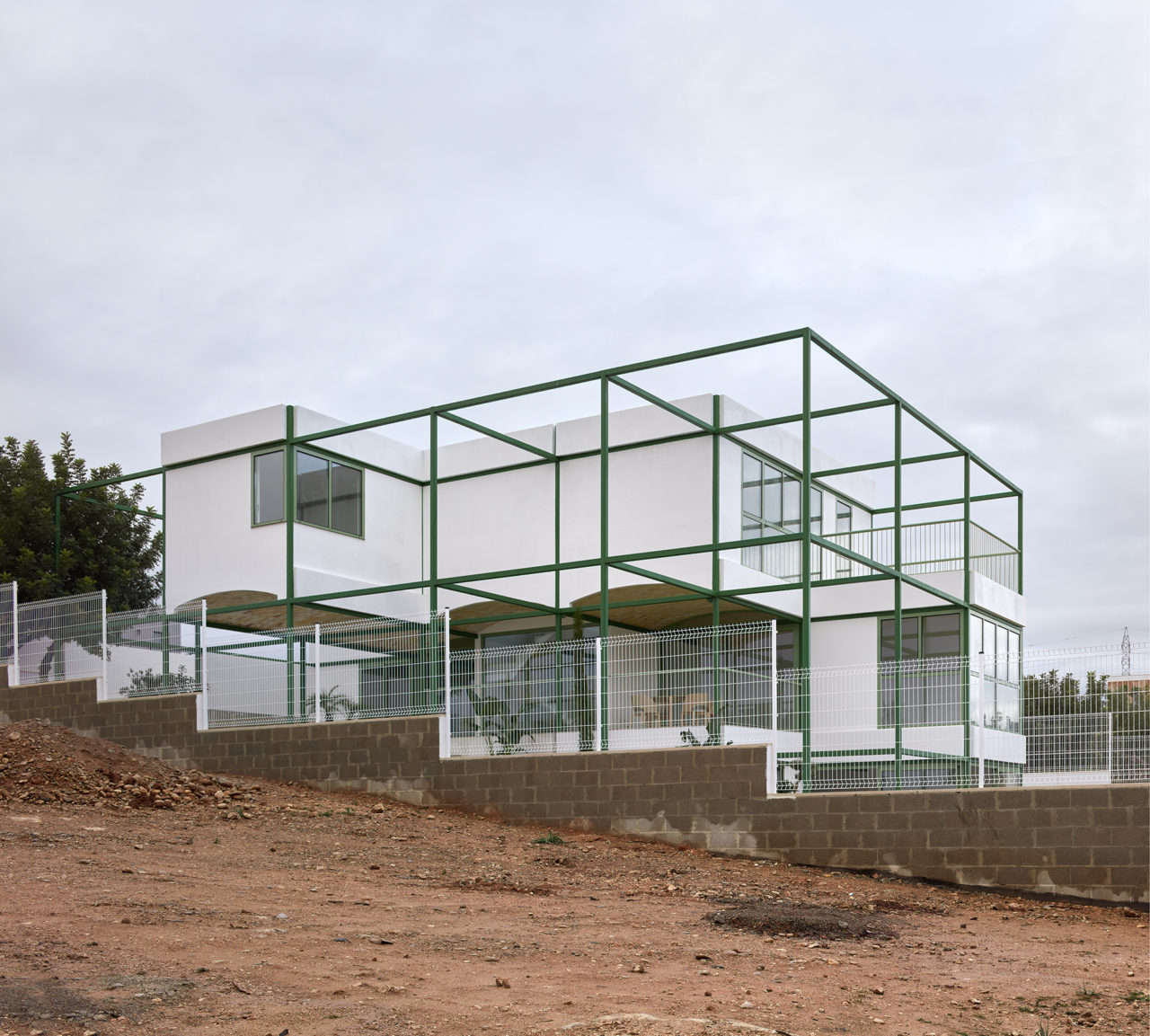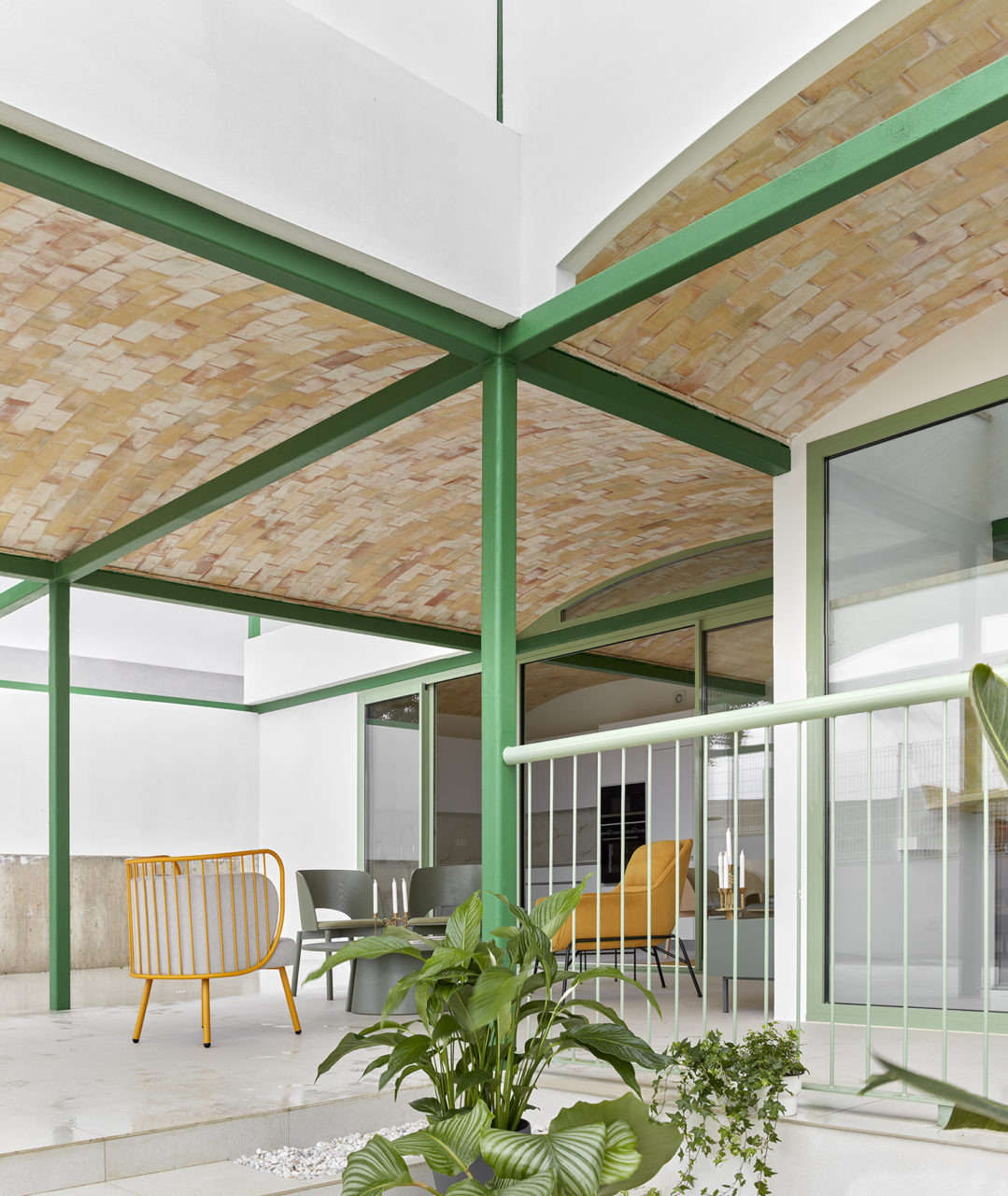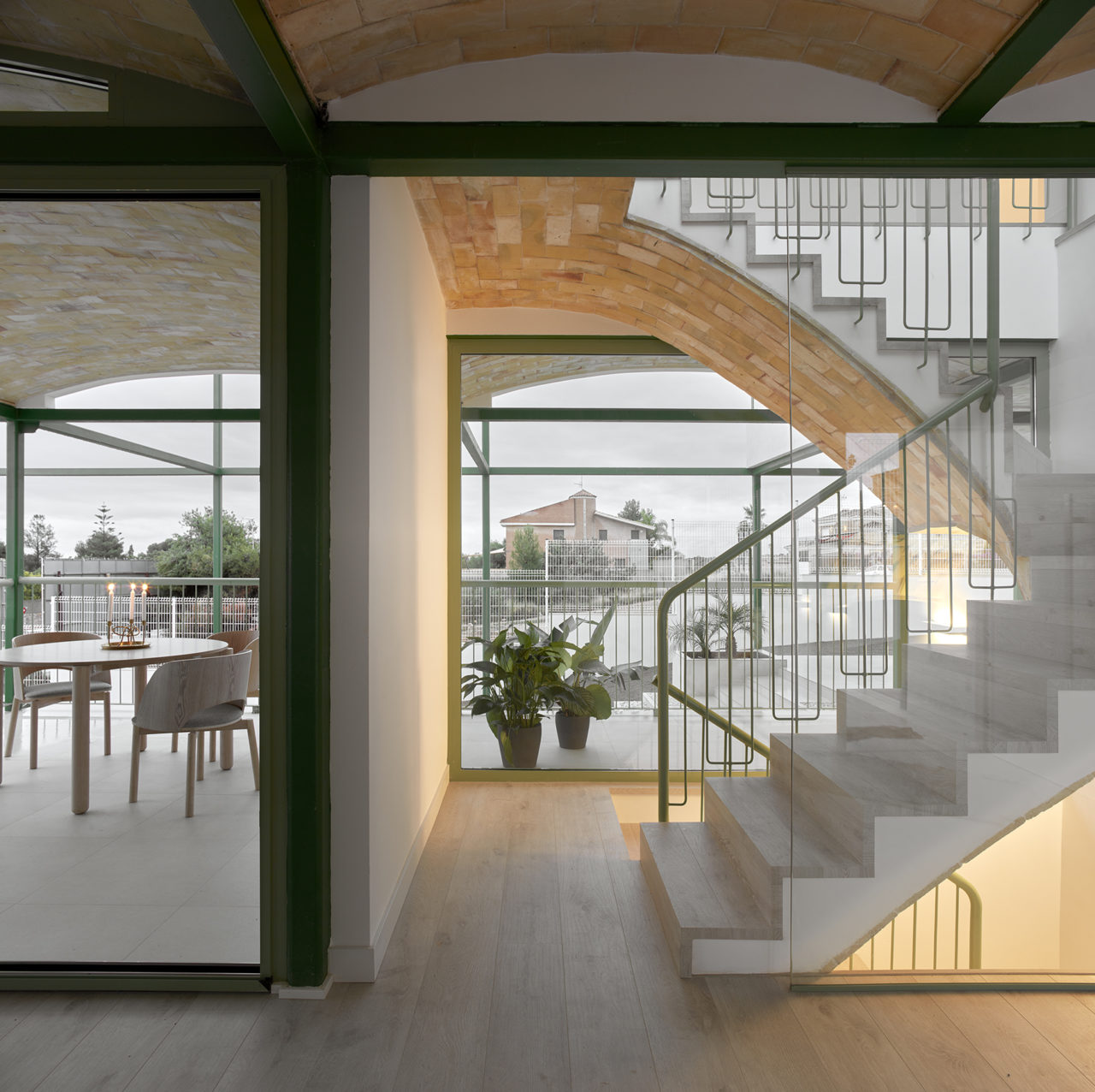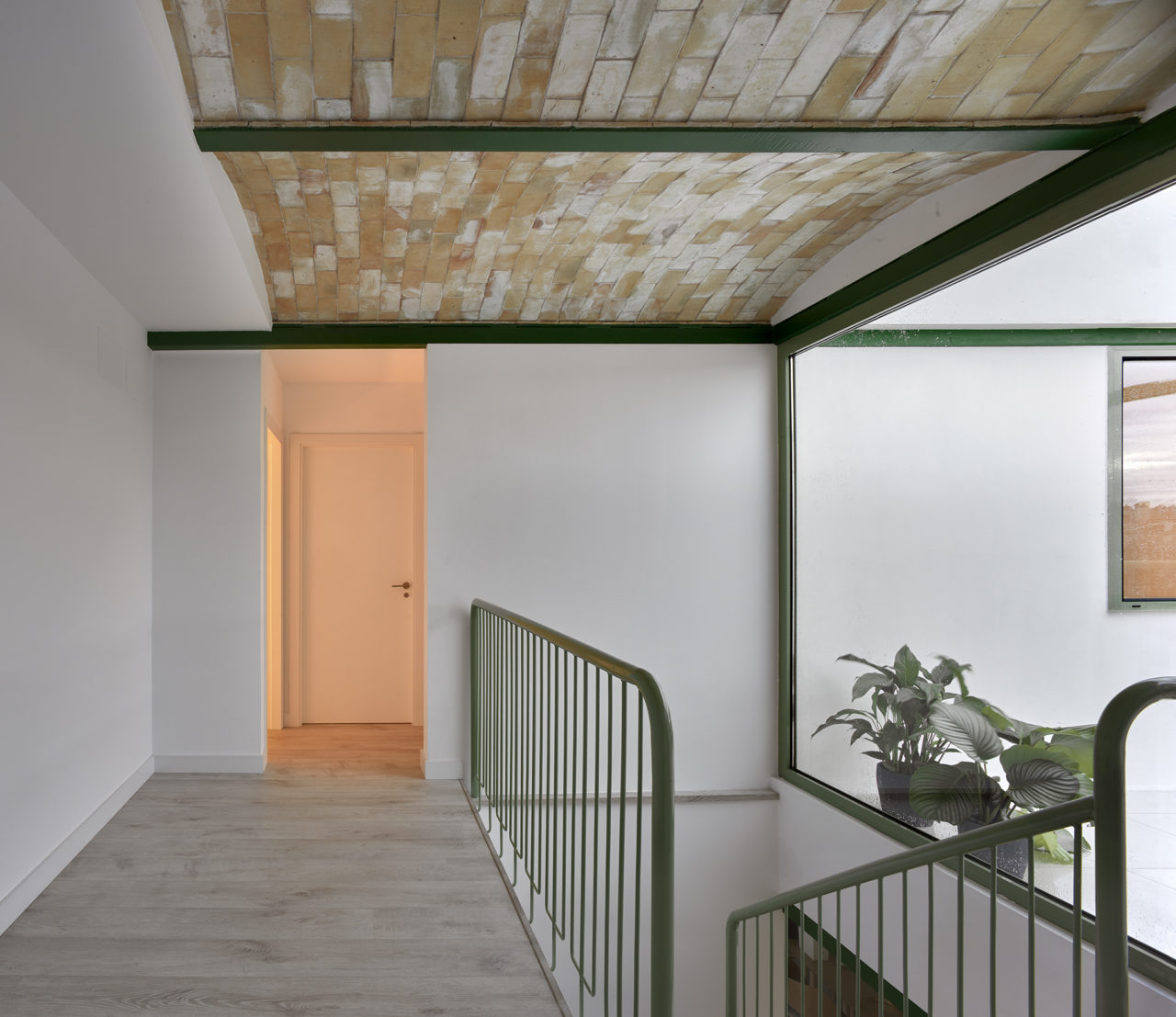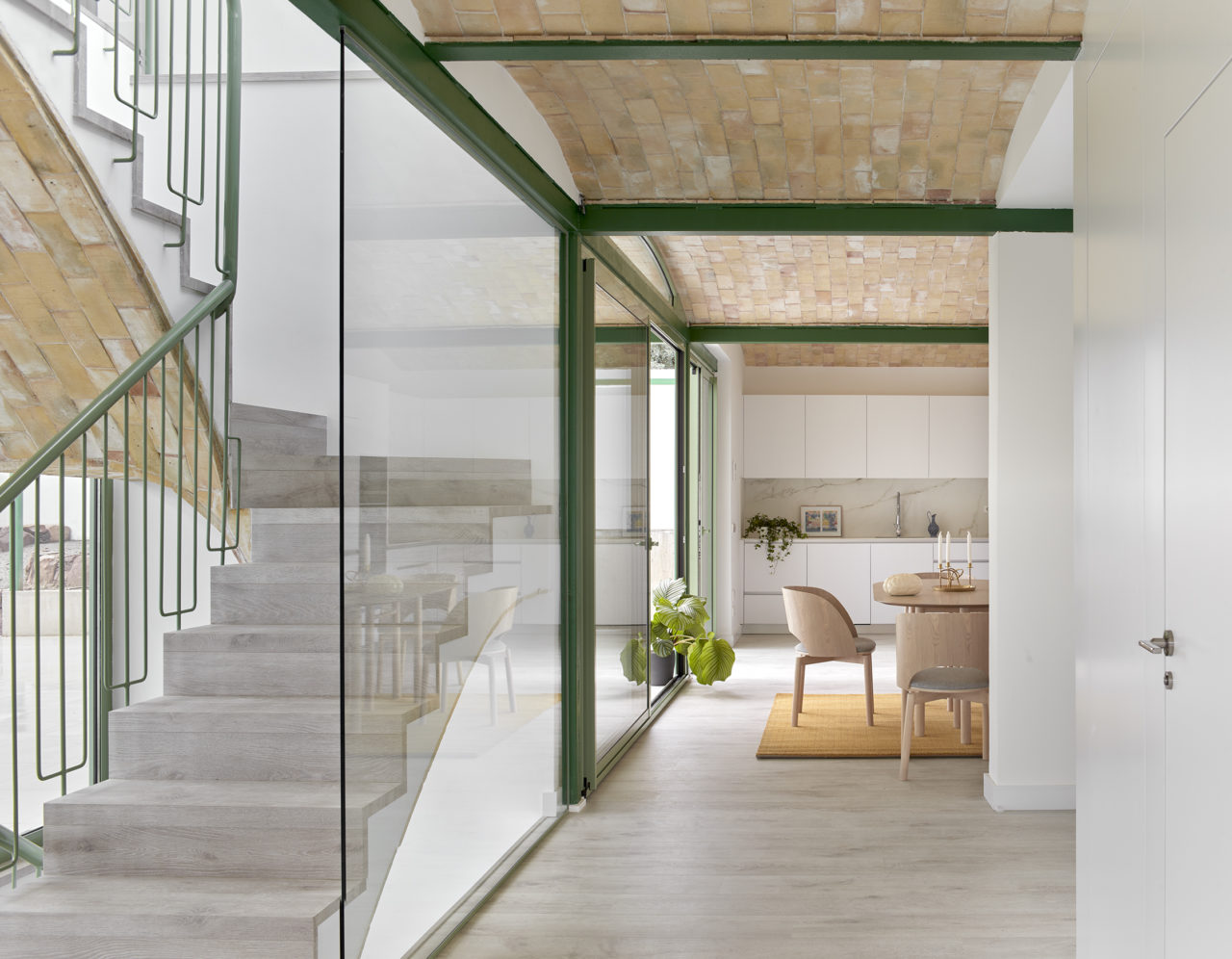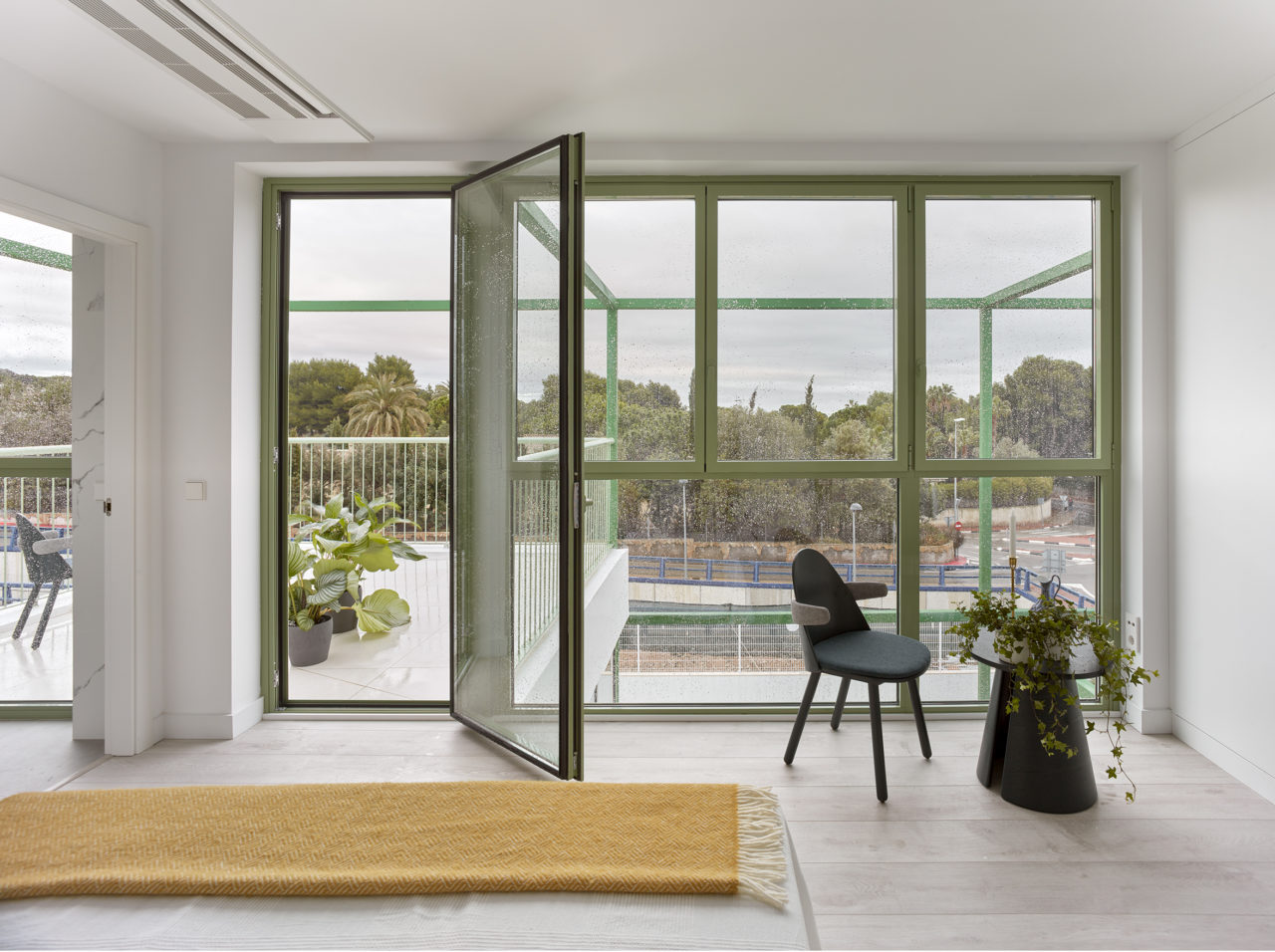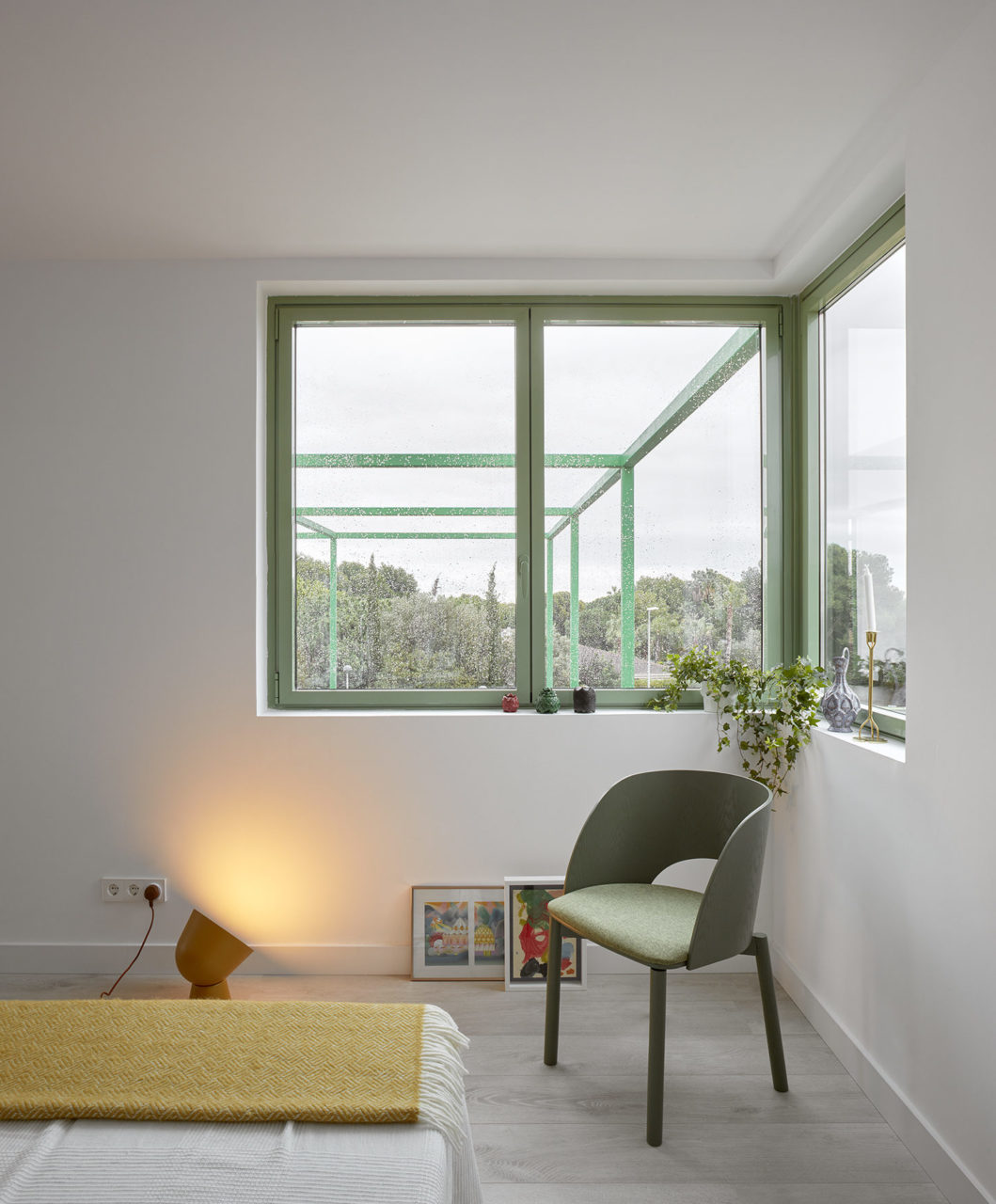In Santa Barbara, Valencia (the original, Eastern Spanish municipality, not the Western U.S. incarnation), a green grid can found rising out of the landscape. Embedded into the same stone as the nearby 758-year-old Valencia Cathedral, the grid is, in fact, a house designed by London-based studio Space Popular with local architects Estudio Alberto Burgos and Javier Cortina Maruenda.
“We’ve never built anything in concrete, I doubt we ever will,” Space Popular cofounder Fredrik Hellberg told AN Interior. “We try and avoid it, to be honest.” It’s a statement that only ten years ago, back when Hellberg and his wife and fellow co-founder Lara Lesmes were studying at the Architectural Association, would’ve garnered odd looks from their peers. Now, however, the conversation around the most destructive material on earth has changed. So instead of building with concrete, Hellberg and Lesmes have opted for steel and brick.
This marriage of the two materials, though, is not as you’d expect. Rather than employing a brick facade to mask a steel frame, almost the opposite is at play here. While steel still serves as a structural frame, it is by no means hidden. Painted green and proudly on display in the form of a grid, composed of 12-feet wide cubes, the steel is a mere four inches thick and feels incredibly delicate. The tectonic distich is completed with loadbearing Guastavino vaults that span various parts of the full structure in half and quarter-width iterations.
It’s a language that is spoken throughout the house—both internally and externally, with flourishes like a brick-vaulted staircase and green trident railings dotted in every corner. “We wanted to eliminate all thresholds between the inside and outside,” Lesmes said. This objective was achieved through a semi-internal courtyard, sliding doors, and by having the gridded structure cover the entire plot, besides the pool area.
The house is currently up for rent but the developer has plans to sell it in the long run. “To have a grid superstructure creates a sense of possibility—you can add a lot of awnings etc.,” Lesmes added. “Hopefully [the eventual owners] will cover the structure with plants, netting, a hammock, or fabrics to delineate shaded areas, that will create a sense of boundary.”
While internal and external boundaries have been blurred, space has been demarcated in plan, on the house’s three floors so that each level has a different layout and feel. The ground floor takes the form of an L-shape, hosting bedroom and a common room that opens up onto the pool area.
The second floor—where you enter the house and can find the kitchen and lounge—essentially runs as a strip down the north side of the house (there are no corridors in the whole building) framing an internal courtyard in the process. The top floor, meanwhile, takes a different shape, housing three bedrooms and two bathrooms while also creating shading and cover for some of the outdoor spaces below.
“We wanted a modular construction system, where the grid is repeated but that could also allow for spatial experiential variation in plan,” Hellberg said. Indeed, all of the 2,530-square-foot house is a celebration of construction and craft. No joints are hidden with plaster, no details are tucked away.
Furthermore, everything that was brought to the site, except the brick palettes was used in the construction of the house. No cranes were used to erect the steel structure and no cement trucks were required either. Local contractors, who introduced the architects to Guastavino vaults, were hired to complete the job. All of these measures reduced costs and the house’s carbon footprint.
This approach also went hand-in-hand with Space Popular’s ethos. “It’s really important, even if you’re not paying attention to it, to have a sense of how the space you’re in was made,” Hellberg said. “It’s not about being 100 percent truthful, but it is about communicating a structure at all levels.”

